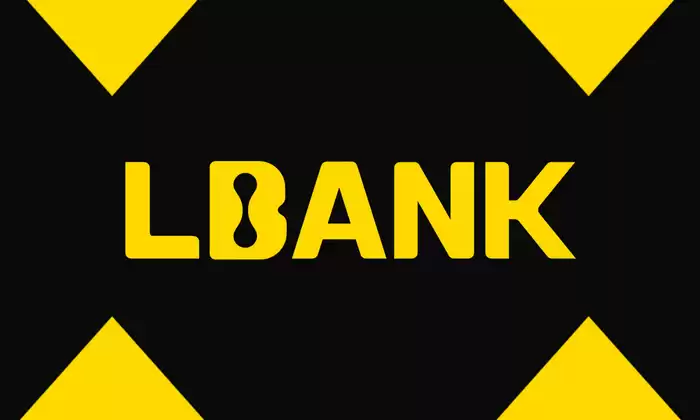-
 Bitcoin
Bitcoin $117700
-1.00% -
 Ethereum
Ethereum $4458
-3.91% -
 XRP
XRP $3.119
0.14% -
 Tether USDt
Tether USDt $1.001
-0.02% -
 BNB
BNB $836.6
-1.56% -
 Solana
Solana $189.5
-3.90% -
 USDC
USDC $0.9998
-0.02% -
 Dogecoin
Dogecoin $0.2335
1.29% -
 Cardano
Cardano $0.9642
1.51% -
 TRON
TRON $0.3539
-1.19% -
 Hyperliquid
Hyperliquid $47.41
-1.84% -
 Chainlink
Chainlink $21.92
-3.28% -
 Stellar
Stellar $0.4286
-0.23% -
 Sui
Sui $3.724
-3.29% -
 Bitcoin Cash
Bitcoin Cash $594.8
-0.78% -
 Ethena USDe
Ethena USDe $1.001
0.04% -
 Hedera
Hedera $0.2501
-2.06% -
 Avalanche
Avalanche $23.96
-4.87% -
 Litecoin
Litecoin $119.0
-2.32% -
 Toncoin
Toncoin $3.473
0.82% -
 UNUS SED LEO
UNUS SED LEO $9.596
0.17% -
 Shiba Inu
Shiba Inu $0.00001301
-0.39% -
 Uniswap
Uniswap $11.03
-0.25% -
 Polkadot
Polkadot $3.935
-2.62% -
 Dai
Dai $1.000
0.01% -
 Bitget Token
Bitget Token $4.564
-1.76% -
 Cronos
Cronos $0.1512
-4.11% -
 Ethena
Ethena $0.7306
-1.09% -
 Pepe
Pepe $0.00001087
-2.68% -
 Aave
Aave $300.2
-4.00%
How to set stop loss on LBank contract
Setting a stop-loss order on the LBank contract enables traders to limit potential losses by exiting a position at a predefined level, aiding in risk management and preserving capital.
Nov 24, 2024 at 12:41 am

How to Set Stop Loss on LBank Contract
Navigating the dynamic world of contract trading on LBank can be a thrilling but potentially risky endeavor. To mitigate potential losses and safeguard your capital, employing a stop-loss order is crucial. A stop-loss order is a pre-defined instruction that triggers the automatic execution of a trade when a specific market price is reached. This strategic tool allows traders to limit potential losses by exiting a position at a заранее specified level. Setting a stop-loss on LBank contract is a straightforward process that involves the following steps:
1. Understand the Basics of Stop-Loss Orders
Before delving into the technicalities of setting a stop-loss on LBank contract, it's essential to grasp its fundamental concepts. A stop-loss order is a contingent order that becomes active only when the market price reaches or exceeds a predetermined threshold. This threshold, known as the "stop price," is set by the trader and serves as the trigger point for the trade execution.
Once the stop price is hit, the stop-loss order will automatically trigger a market order to sell or buy the underlying asset. The purpose of a stop-loss order is to cap potential losses by limiting the risk exposure to a predefined level.
2. Determine the Ideal Stop-Loss Level
Establishing the optimal stop-loss level is a critical aspect of risk management in contract trading. The ideal stop-loss level can vary depending on your trading strategy, risk tolerance, and market conditions. Some common approaches to determining the stop-loss level include:
- Technical Analysis: Identifying support and resistance levels through technical analysis can provide insights into potential price reversal points. Setting the stop-loss just below a support level in a down-trending market or above a resistance level in an up-trending market can help minimize losses.
- Volatility Assessment: Analyzing the historical volatility of the asset can help gauge the potential price fluctuations. Setting the stop-loss level a certain percentage away from the current price, based on the expected price volatility, can provide a buffer against sudden market movements.
- Trailing Stop-Loss: A trailing stop-loss is a dynamic stop-loss level that adjusts automatically as the price of the asset moves in a favorable direction. This strategy helps lock in profits while allowing for further price appreciation.
3. Access the LBank Contract Interface
To set a stop-loss order on LBank contract, you'll need to access the contract trading interface. This can be done by selecting the "Contracts" option from the top menu bar of the LBank website and then choosing the specific contract market you wish to trade.
The contract trading interface typically consists of two primary sections. The left section displays the order book and market depth, while the right section provides a chart of the underlying asset's price movements. Below the chart, you'll find the order entry panel where you can set your stop-loss order parameters.
4. Configure the Stop-Loss Order Parameters
In the order entry panel, select the "Stop Limit" order type. This order type combines a stop order with a limit order, allowing you to specify both the stop price and the limit price.
- Stop Price: Enter the stop price at which you want the stop-loss order to be triggered. Remember, this price should be carefully selected based on your risk management strategy.
- Limit Price: Specify the limit price at which you want the market order to be executed once the stop price is reached. The limit price should be set based on your desired exit point and should provide a favorable execution price.
- Quantity: Indicate the number of contracts you want to sell or buy when the stop-loss order is triggered.
- Leverage (Optional): If you wish to apply leverage to your stop-loss order, select the desired leverage multiple from the available options. Leverage can magnify both profits and losses, so use it with caution.
5. Review and Confirm the Stop-Loss Order
Once you've configured the stop-loss order parameters, carefully review all the details to ensure accuracy. Confirm that the stop price, limit price, quantity, and leverage (if applicable) are as intended.
It's always a good practice to double-check the order details before placing it to avoid any costly mistakes. Once you're satisfied with the order parameters, click the "Place Order" button to execute the stop-loss order.
Disclaimer:info@kdj.com
The information provided is not trading advice. kdj.com does not assume any responsibility for any investments made based on the information provided in this article. Cryptocurrencies are highly volatile and it is highly recommended that you invest with caution after thorough research!
If you believe that the content used on this website infringes your copyright, please contact us immediately (info@kdj.com) and we will delete it promptly.
- Kazakhstan's Crypto Leap: Bitcoin ETF and Central Asia's Digital Finance Future
- 2025-08-13 12:45:19
- BlockDAG Presale Blazes Past $371M: Fundraising Frenzy Fuels Crypto Sensation
- 2025-08-13 13:05:21
- Meme Coins: Chasing the 2025 Surge – Which Will Moonshot?
- 2025-08-13 10:25:23
- Bitcoin's Wild Ride: Rally, Pullback, and What's Next
- 2025-08-13 10:25:23
- Bitcoin, Bitmax, and Institutional Demand: A New Era of Crypto Investment
- 2025-08-13 10:45:12
- Solana, ROAM, and Airdrops: What's the Buzz in 2025?
- 2025-08-13 11:35:13
Related knowledge

Is it possible to adjust the leverage on an open position on KuCoin?
Aug 09,2025 at 08:21pm
Understanding Leverage in KuCoin Futures TradingLeverage in KuCoin Futures allows traders to amplify their exposure to price movements by borrowing fu...

What cryptocurrencies are supported as collateral on KuCoin Futures?
Aug 11,2025 at 04:21am
Overview of KuCoin Futures and Collateral MechanismKuCoin Futures is a derivatives trading platform that allows users to trade perpetual and delivery ...

What is the difference between realized and unrealized PNL on KuCoin?
Aug 09,2025 at 01:49am
Understanding Realized and Unrealized PNL on KuCoinWhen trading on KuCoin, especially in futures and perpetual contracts, understanding the distinctio...

What different order types are available to use on KuCoin Futures?
Aug 13,2025 at 11:35am
Understanding Order Types on KuCoin FuturesKuCoin Futures offers a comprehensive range of order types to accommodate different trading strategies and ...

How does KuCoin Futures compare against Binance Futures in terms of features?
Aug 09,2025 at 03:22am
Trading Interface and User ExperienceThe trading interface is a critical component when comparing KuCoin Futures and Binance Futures, as it directly i...

How can I manage risk when applying high leverage on KuCoin?
Aug 13,2025 at 11:35am
Understanding High Leverage and Its Implications on KuCoinHigh leverage in cryptocurrency trading allows users to control larger positions with a rela...

Is it possible to adjust the leverage on an open position on KuCoin?
Aug 09,2025 at 08:21pm
Understanding Leverage in KuCoin Futures TradingLeverage in KuCoin Futures allows traders to amplify their exposure to price movements by borrowing fu...

What cryptocurrencies are supported as collateral on KuCoin Futures?
Aug 11,2025 at 04:21am
Overview of KuCoin Futures and Collateral MechanismKuCoin Futures is a derivatives trading platform that allows users to trade perpetual and delivery ...

What is the difference between realized and unrealized PNL on KuCoin?
Aug 09,2025 at 01:49am
Understanding Realized and Unrealized PNL on KuCoinWhen trading on KuCoin, especially in futures and perpetual contracts, understanding the distinctio...

What different order types are available to use on KuCoin Futures?
Aug 13,2025 at 11:35am
Understanding Order Types on KuCoin FuturesKuCoin Futures offers a comprehensive range of order types to accommodate different trading strategies and ...

How does KuCoin Futures compare against Binance Futures in terms of features?
Aug 09,2025 at 03:22am
Trading Interface and User ExperienceThe trading interface is a critical component when comparing KuCoin Futures and Binance Futures, as it directly i...

How can I manage risk when applying high leverage on KuCoin?
Aug 13,2025 at 11:35am
Understanding High Leverage and Its Implications on KuCoinHigh leverage in cryptocurrency trading allows users to control larger positions with a rela...
See all articles

























































































